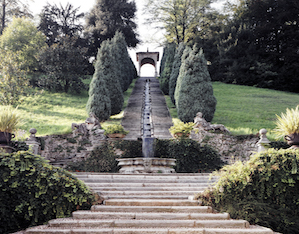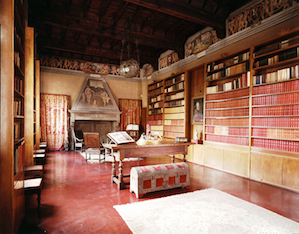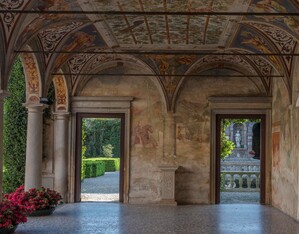Villa Cicogna Mozzoni’s frescoed rooms and gardens interpenetrate in this luminous example of Lombard Renaissance architecture. Breathtaking prospects run through the villa and its surrounding landscape, from the loggias to the parterres and on to the highest point at this English-style park.
Located in a valley once renowned for hunting brown bears, this former hunting lodge was transformed into an elegant and delightful villa in the 16th century. Ascanio Mozzoni – whose heirs married into the Cicogna family – created the gardens in 1560, drawing inspiration from gardens he’d admired visiting villas in Tuscany and Lazio. To the south, the courtyard of honour and its loggias overlook a parterrewith boxwood hedges, set between walls of spongy Porlezza tuff rock. Reflected in the waters of two fishponds, a series of statues in niches evokes ancient nymphaea. To the north, the Viale della Caccia leads to a two-level formal garden of topiary beds, basins and flowering corbeilles. The garden’s geometry-inspired first terrace was built in the 17th century; a second was added in the 19th century. To the west, a staircase from 1728 climbs the hill, its two ramps divided by a steep succession of small waterfalls; the water flows into a basin at the bottom, while the ramps are bordered by two rows of cypresses. On the hilltop, a small temple offers charming panoramic views, marking the transition to the English-style garden created in the 19th century. Here, surrounded by a rich collection of trees and shrubs, greenhouses, fountains and water basins, another belvedere offers impressive views out over Lake Lugano.




